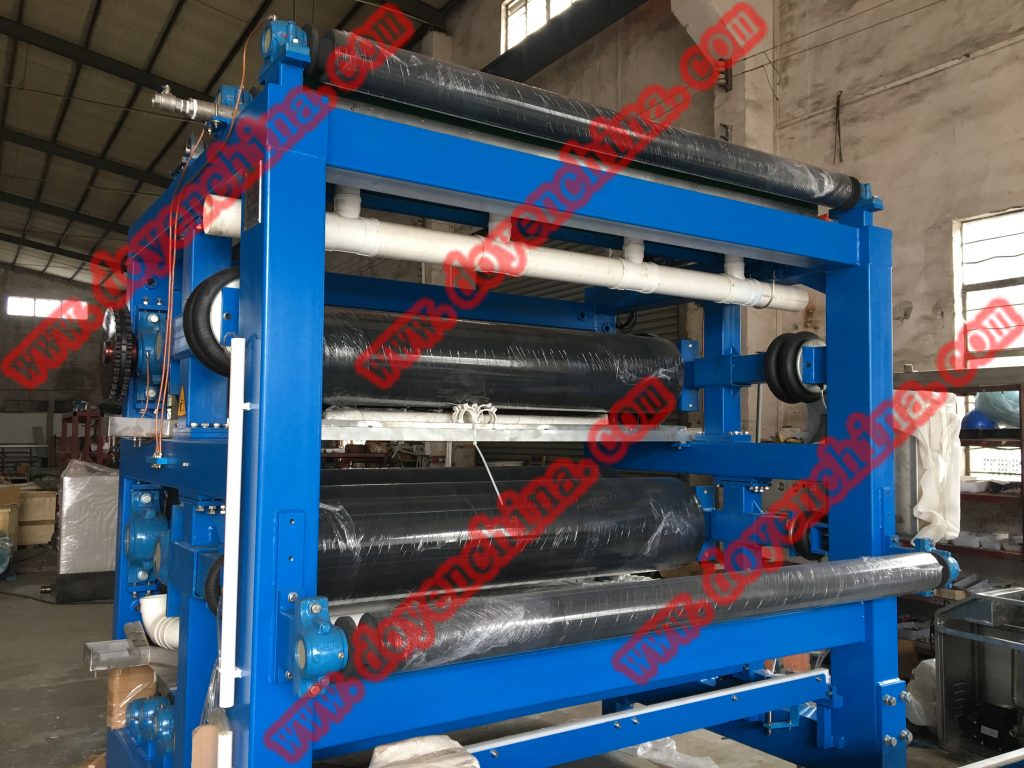

Tel:
+86-757-8633-0278
Email:doyen@doyenchina.com
Fax:+86-757-86287390
Address:Room 201, Building No. 24, Yicui Rose Garden, No. 2, Jihua 7 Road, Chancheng District, Foshan City, Guangdong Province, China 528000.
“By 2020, the rural sewage treatment rate will reach 30% or more” is a key task put forward in the “Thirteenth Five-Year Plan for the Comprehensive Improvement of the National Rural Environment.” To achieve this goal, rural sewage treatment still has a long way to go. In the short term, how to achieve “well-built, affordable and manageable” is also a difficult question.
In the vast rural areas of our country, sewage disposal has always been a prominent shortcoming in the improvement of human settlements. The No. 1 document issued by the central government in 2019 regards the treatment of rural domestic sewage as an important part of the work to implement the “village revitalization strategy” and improve the rural human settlement environment.

But in terms of governance needs, the rural sewage treatment market is indeed a blue ocean, but this seemingly beautiful market is actually much harder.
According to statistics, my country’s rural sewage treatment rate was only 22% in 2016, which means that 78% of rural domestic sewage has not been resolved. It is estimated that by 2020, China’s rural sewage discharge will reach 27 billion tons.
Although the “main pipe network” for sewage collection in some areas has basically taken shape, the “capillary network” extending from the main pipeline to the farmers’ homes has not yet been established. There are widespread problems such as non-division of rain and sewage, sedimentation tanks, inspection wells, and irregular locations. .
Some of the rural sewage treatment systems that have been built are idle due to large capital investment, high operating costs, insufficient professional and technical capabilities, and inability to keep up with daily maintenance, and their treatment effects are not satisfactory. So far, “small and scattered”, “out of supervision”, and “a large number of idle sewage treatment facilities” constitute the status quo of rural sewage treatment.
So far, rural sewage treatment still lacks design, construction specifications and construction standards that meet the characteristics of rural areas. Therefore, referring to urban sewage treatment often results in waste. In many places, in accordance with the requirements of urban sewage treatment, it is required to reach Class A, or even Class IV on the surface, which directly leads to financial pressure.
As researcher Xia Qing, former vice president and chief engineer of the Chinese Academy of Environmental Sciences, said, “The pollution must be solved from the source, not from the end like in the city. Rural pollution control must not follow the old road of centralized treatment in the city. It must be replaced. A new way of decentralized processing, decentralized utilization, on-site resource utilization and energy conversion.”
Compared with municipal sewage treatment plants, if rural domestic sewage treatment stations with a daily processing capacity of only tens of tons are to operate stably, rural sewage treatment depends more on technology and requires technology. At present, there are a hundred flowers blooming in rural sewage treatment technology, there are various improved activated sludge methods, there are also various forms of biofilm methods, and there are many ecological treatment technologies such as constructed wetlands.
And what kind of technology is the mainstream technology of rural sewage treatment, there is always no standard answer. But what is certain is that rural sewage treatment technology and equipment should be more adaptable to changes in water load and concentration load, with low cost and simple operation and maintenance.
“When selecting technical solutions to treat sewage, we must emphasize rural water use, because after the construction of sewage treatment projects in rural areas, we may encounter the problem of insufficient operating costs in the operation stage, which requires us to consider economic factors as the most important factor. .”
So far, there has not been a unified method and standard for the allocation of operating expenses for rural sewage treatment facilities. The relevant expenses are mainly invested by governments at all levels, and even some places need to be raised by the township. Rural domestic sewage treatment is not that the larger the volume, the more difficult it is to treat. The smaller the water volume, the greater the fluctuation of water quality and volume, and the smaller the scale of the facility, the more difficult it is to operate stably.

For the rural sewage treatment market, it is urgent to explore a business model with higher efficiency and lower cost. Compared with the PPP model and the EPC model, the EPC+O model is more suitable for the current village (township) sewage and garbage treatment in China, and it solves the investment model and investment efficiency problems of this special business type. Integrate factors such as the impact of village (township) sewage on the environment, unit pipeline network and water plant investment, and operating costs, and determine governance goals by constructing a “village (township) and township sewage investment economic map”.
Rural sewage treatment not only starts from the source, but also considers where the sewage goes. With the goal of achieving the comprehensive quality of the water environment as the goal, the village and township sewage should be treated as a “non-point source” rather than a “point source” to implement systemic governance.
Considering factors such as weak rural financial resources, difficulty in charging, and lack of self-operation and maintenance management, rural domestic sewage treatment in different regions needs to be combined with actual conditions, and different treatment modes should be selected according to local conditions, and economic, simple, energy-saving and effective treatment technologies should be adopted.
For newly built or renovated rural houses or demolition resettlement houses, the surrounding sewage pipe network and facilities shall be improved to ensure the drainage of rain and sewage in the pipe network, and prevent the construction of the first and then the treatment, and the reconstruction after the construction.
Doyen specializes in providing belt press equipment for the Southeast Asian market. Welcome to visit our workshop and formulate a more scientific plan based on the actual situation of your company. Welcome to visit joyce@doyenchina.com or visit https://www.doyenchina.com.
Mar-01-2021
admin

 +86-757-8633-0278
+86-757-8633-0278 doyen@doyenchina.com
doyen@doyenchina.com Sitemap
Sitemap